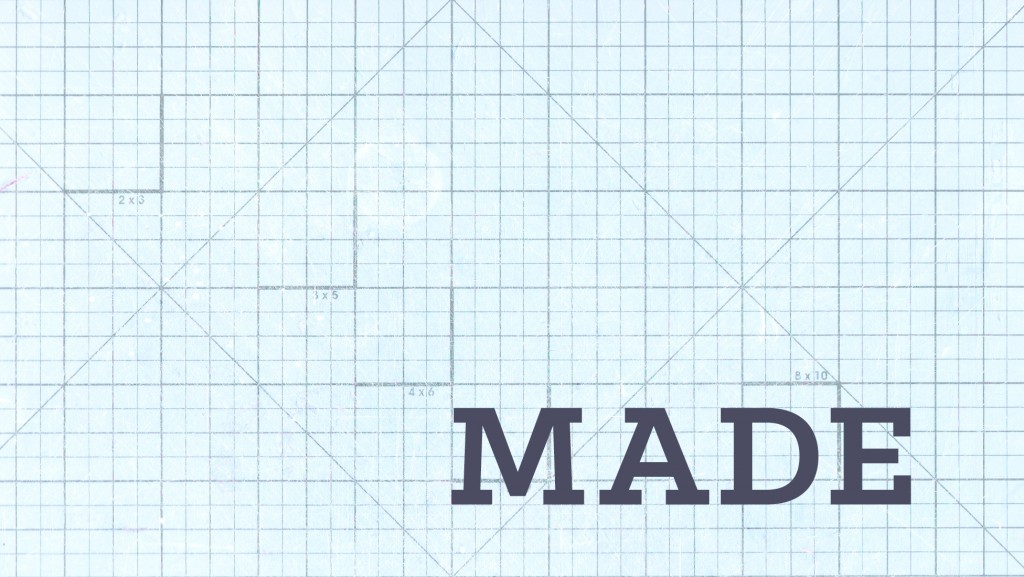In this sermon series about Gideon we’ve talked a lot about “the life you’re made to live.” This notion is really helpful in some ways, but it can be complicated too. What do we mean by the life you’re made to live? Does God have an exact blueprint of how you’re supposed to live out your days and the choices you’re supposed to make on your journey? If so, what happens when you get off of that blueprint? Have you blown it? Does the blueprint course correct like re-routing in Google Maps?
All of us are made in the image of God with innate gifts and talents which lend us incredible potential for the Kingdom of God and the common good. It also seems clear that God cares about the decisions we make with that potential. We’re told to seek counsel, to follow the Scriptures, and to listen to the Holy Spirit, because our choices and our character matter. Because our choices and character matter, we want to know we’re doing things right, we’re on the right path, we’ve found the blueprint. I’m just not sure we can always expect a dry fleece or a talking donkey to be the way God conveys those insights or communicates direction.
Is it possible that God had a special purpose for some specific people in the Bible that he communicated with in unique (and not normative or expected) ways? Gideon is an especially challenging example. There’s unique communicating and then there’s Gideon! When the angel of the Lord first appears to him, he touches his sacrifice so it’s consumed in fire (Judges 6:21). Next is the sign of the fleece (6:36-40), and finally God tells him to watch how people hang out the water cooler to thin out the army for his glory (7:4-7). God had a specific and redemptive plan for Gideon and so that plan was communicated in a really unexpected way.
I wonder if we would be better off to let go of the notion that God has a distinct blueprint of the minutiae of our lives and decisions—as enticing as a blueprint might seem sometimes. Roger E. Olson in his book, Questions to All Your Answers, suggests an alternative to thinking of the life we’re made to live as a blueprint: “Why not instead think of it as a canvas and set of paints?” In this analogy, I wonder if we have a great deal of freedom to think and chose for ourselves if we’re considering our choices prayerfully. I wonder if community and reason are tools we ought to take heavily into account more often. Olson explains:
“The person seeking God’s will becomes, then, a painter—perhaps an amateur painter, but a painter nevertheless. The canvas stands for a person’s life. God gives us a life—a particular life starting with parents, genetic inheritance, language and culture, geographical location, relatives and friends, schools, and experiences. The future beginning with each day is the canvas. It includes the contours of your particular life. Then God gives the paints and paintbrushes, which symbolize his gifts, strengths, talents, God’s Word, mentors, human models (teachers, pastors etc.) and opportunities. Then God says, ‘Paint me a beautiful picture.’ Oh and he gives us the Holy Spirit as an art instructor and Jesus Christ as a model. (Of course, Jesus is much more than just a human model; he is our Saviour. But for purposes of this analogy he is our model.) But we’re not supposed to paint Jesus. We’re supposed to paint a life that is our own modeled on the character of Jesus. God will help us. Each day we fill in a little bit of the painting. We make mistakes and have to make corrections to the painting.”
Maybe you agree that this model is more accurate, maybe not. It’s not an easier model of reality to live in. In fact, it’s messier. We will have to discern the best outcome based on the information we’re given instead of finding an elusive pre-ordained map. We will make mistakes along the way. Yet, trying to paint on this vast and colorful canvas can also be beautiful, and we might find this invitation to pick up our paints and create something to be altogether more enticing than finding a blueprint.

Interested in submitting a piece you’ve written or becoming a regular contributor to the Awakening blog? Email Alicia McClintic at [email protected]